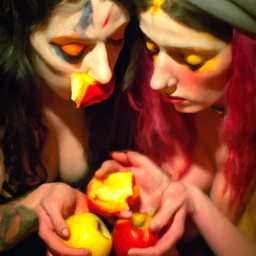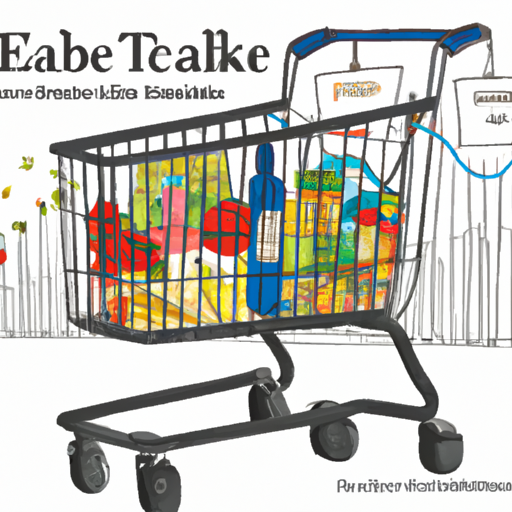Goblin Market Analysis
In this article, you will explore a captivating analysis of “Goblin Market”. Immerse yourself in the enchanting and mysterious world of this renowned poem as we delve into its themes, symbolism, and hidden meanings. Brace yourself for a journey into the heart of this literary masterpiece, as we unravel the depths of “Goblin Market” and uncover its mesmerizing secrets. Get ready to be captivated by this thought-provoking analysis that will evoke a sense of wonder and intrigue within you.
Table of Contents
Summary
In Christina Rossetti’s poem “Goblin Market,” the story follows two sisters, Laura and Lizzie, who are tempted by goblin fruit. The narrative explores themes of temptation and desire, sisterhood, sacrifice, and redemption. Through rich symbolism, such as the use of fruit, the market, and the goblin men, Rossetti layers her poem with multiple interpretations. The poem’s structure relies on a unique rhyme scheme, repetition, and figurative language to engage the reader. “Goblin Market” also delves into gender and sexuality, with feminist interpretations highlighting the male gaze and erotic undertones. Religious and biblical references, including the fall of man and Virgin Mary imagery, bring another layer of meaning to the poem. Since its publication, “Goblin Market” has received both contemporary reviews and close analysis, with its influence and legacy evident in modern adaptations, its impact on feminist literature, and its continued relevance.
Historical Context
Victorian Era
Written during the Victorian era, “Goblin Market” reflects the social and cultural trends of the time. This period was characterized by strict moral codes, sexual repression, and the emphasis on the idealized domestic woman. Rossetti’s poem challenges these societal norms, exploring the themes of desire and temptation in a daring and unconventional manner.
The Pre-Raphaelite Brotherhood
Rossetti was associated with the Pre-Raphaelite Brotherhood, an artistic movement that sought to return to the detailed and vibrant styles of medieval art. This influence is evident in the poem’s lush and vivid descriptions, as well as in the emphasis on symbolism and visual imagery.
Christina Rossetti
Christina Rossetti, a Victorian poet, was known for her introspective and deeply emotional works. “Goblin Market” stands as one of her most famous and celebrated poems. Rossetti’s personal experiences and religious beliefs heavily influenced her writing, and these elements are evident in “Goblin Market.”
Themes
Temptation and Desire
One of the central themes in “Goblin Market” is the exploration of temptation and desire. Laura and Lizzie find themselves lured by the enchanting and irresistible goblin fruit. Rossetti uses vivid descriptions to emphasize the allure of the fruit, symbolizing the seductive nature of desire. This theme allows for a deeper examination of human temptation, the consequences of giving in to desire, and the possibility of redemption.
Sisterhood
“Sisterhood” is another recurring theme in the poem, as Laura and Lizzie share a strong bond as siblings. When Laura falls victim to the goblin fruit, Lizzie becomes her protector. The poem highlights the power of sisterly love and the willingness to sacrifice for the well-being of a loved one. This theme celebrates the support women can find in each other in a male-dominated society.
Sacrifice
The theme of sacrifice is intricately woven into “Goblin Market” as Lizzie endures physical and emotional torment to save Laura. Rossetti presents sacrifice as an act of love and sisterhood, emphasizing the strength and resilience of women. This theme also explores the selflessness required to overcome temptation and achieve redemption.
Redemption
The concept of redemption is at the heart of “Goblin Market.” Laura’s fall into temptation, her subsequent illness, and eventual redemption demonstrate the possibility of renewal and salvation. Through Lizzie’s self-sacrifice and her refusal to yield to the goblin men, she becomes the catalyst for Laura’s redemption. This theme reflects Rossetti’s Christian beliefs and the possibility of spiritual salvation.
Symbolism
Fruit
In “Goblin Market,” fruit plays a crucial symbolic role, representing both temptation and desire. The allure of the goblin fruit captures Laura’s attention, and she indulges in it, experiencing both pleasure and eventual consequences. The fruit can be seen as a metaphor for forbidden desires and the dangers of succumbing to them.
Market
The market in the poem serves as a metaphorical space where temptation is both displayed and consumed. Rossetti uses the market setting to emphasize the dangerous allure of desire, inviting readers to consider the impact of consumerism and the dangers of unchecked desires.
Laura and Lizzie
The characters of Laura and Lizzie symbolize contrasting responses to temptation. Laura represents the one who succumbs to desire, experiencing the negative consequences, while Lizzie embodies resistance and selflessness. Their relationship also symbolizes the strength and resilience of sisterhood in the face of adversity.
Goblin Men
The goblin men in the poem symbolize temptation personified. Their physical appearance, described as grotesque and otherworldly, represents the threats that can arise from succumbing to desires. Their persistence in offering the fruit and their attempts to force it upon Lizzie further emphasize the dangers and consequences of giving in to temptation.
Narrative Structure
Rhyme Scheme
“Goblin Market” utilizes a unique rhyme scheme, combining both regular and irregular patterns. Rossetti employs alternating tetrameter and trimeter lines, creating a lyrical and musical quality. This rhyme scheme adds to the captivating and enchanting nature of the poem, further drawing the reader into the narrative.
Repetition
Repetition is a prominent narrative technique employed in “Goblin Market.” Rossetti repeats phrases and key words, such as “Come buy, come buy” and “We must not look sideways at Goblin men,” to emphasize certain themes and ideas. This repetition creates a rhythmic effect and reinforces the central message of the poem.
Figurative Language
Rossetti’s use of figurative language, including metaphors and vivid imagery, enhances the poem’s impact. She employs sensory details and descriptive language to bring scenes to life, immersing the reader in the sights, sounds, and emotions of the narrative. The figurative language used in “Goblin Market” contributes to its rich symbolism and deepens its thematic exploration.
Gender and Sexuality
Feminist Interpretations
“Feminist interpretations of “Goblin Market” examine the ways in which the poem challenges traditional gender roles and patriarchal norms. The focus on sisterhood, female agency, and resistance to the male-dominated society highlights Rossetti’s feminist views. The poem presents the female characters as strong and capable, capable of resisting and ultimately overcoming temptation.
Male Gaze
The male gaze, a concept prevalent in feminist analysis, is also addressed in “Goblin Market.” The goblin men, with their seductive behavior and persistent pursuit of the sisters, represent the objectifying gaze of men towards women. By depicting the goblin men as threatening and dangerous, Rossetti critiques the patriarchal power dynamics prevalent in Victorian society.
Erotic Undertones
Within “Goblin Market,” there are subtle erotic undertones that can be analyzed through a feminist lens. Rossetti’s descriptions of the fruit, the market, and the interactions between the goblin men and the sisters evoke sensual imagery. These erotic undertones challenge the limited expression of female sexuality during the Victorian era, offering a provocative interpretation of desire and temptation.
Religious and Biblical References
Fall of Man
Biblical references, particularly those related to the fall of man, pervade “Goblin Market.” The poem alludes to Adam and Eve’s story in the Garden of Eden, emphasizing the consequences of giving in to temptation. The fall of man narrative adds a layer of moral and religious significance, suggesting that succumbing to desire leads to suffering and loss.
Redemption and Salvation
Rossetti explores the themes of redemption and salvation, connecting them to Christian theology. The selfless actions of Lizzie and the possibility of spiritual renewal for Laura demonstrate the Christian concept of redemption through sacrifice and salvation. These religious themes provide a moral framework for understanding the consequences of temptation and the potential for redemption.
Virgin Mary Imagery
Virgin Mary imagery is subtly incorporated into “Goblin Market.” Lizzie, through her selflessness, can be seen as a symbol of purity and virtue, reminiscent of the Virgin Mary. This imagery adds a spiritual and religious dimension to the poem, further reinforcing concepts of purity, sacrifice, and redemption.
Critical Reception
Contemporary Reviews
Upon its publication, “Goblin Market” received mixed reviews. Some critics praised Rossetti’s lyrical and imaginative style, while others found the poem too unconventional and challenging. The moral and religious themes explored in the poem were also subjects of debate, with some critics applauding Rossetti’s Christian message and others viewing it as overly didactic.
Feminist Analysis
In later years, “Goblin Market” gained recognition for its feminist undertones and themes. Feminist analysis of the poem highlighted Rossetti’s critique of patriarchal power structures, her celebration of sisterhood, and her exploration of female desire and agency. The poem’s emphasis on female strength and resilience resonated with feminist readers and scholars.
Psychoanalytic Interpretations
Psychoanalytic interpretations of “Goblin Market” delve into the psychological aspects of the narrative. Some critics examine the poem through the lens of Carl Jung’s theories on the collective unconscious, exploring the deeper symbolic meaning of the goblin fruit and the sisters’ temptation. These interpretations offer a psychological perspective on the characters’ motivations and desires.
Influence and Legacy
Modern Adaptations
Over time, “Goblin Market” has inspired numerous adaptations in various art forms. In the realm of literature, contemporary authors have written stories and novels that draw inspiration from Rossetti’s themes and narrative structure. The poem has also been adapted into theater productions, visual artwork, and even musical compositions. These adaptations demonstrate the enduring appeal and relevance of “Goblin Market.”
Impact on Feminist Literature
“Goblin Market” holds a significant place in the history of feminist literature. Its exploration of gender roles, female desire, and resistance to patriarchal oppression laid the groundwork for subsequent feminist writings. Rossetti’s bold and daring portrayal of women revolutionized the way female characters were depicted in literature, earning her a place among the pioneers of feminist thought.
Continued Relevance
Despite being written over a century ago, “Goblin Market” continues to resonate with readers today. Its universal themes of temptation, redemption, and sisterhood transcend time and cultural boundaries. The poem’s exploration of female experience and its critique of patriarchal power dynamics remain relevant in the ongoing struggle for gender equality and empowerment.
Conclusion
Christina Rossetti’s “Goblin Market” is a poem that engages readers with its exploration of themes such as temptation, sisterhood, sacrifice, and redemption. Through rich symbolism and vivid imagery, the poem delves into the complexities of desire and the consequences of succumbing to temptation. The unique narrative structure, employing a distinct rhyme scheme, repetition, and figurative language, contributes to the enchanting and immersive experience of “Goblin Market.” The poem’s examination of gender and sexuality, religious and biblical references, and its critical reception all reflect the enduring significance and influence of Rossetti’s work. From contemporary reviews to feminist analysis and psychoanalytic interpretations, “Goblin Market” has sparked critical discourse and inspired modern adaptations while remaining a relevant and compelling piece of literature to this day.






